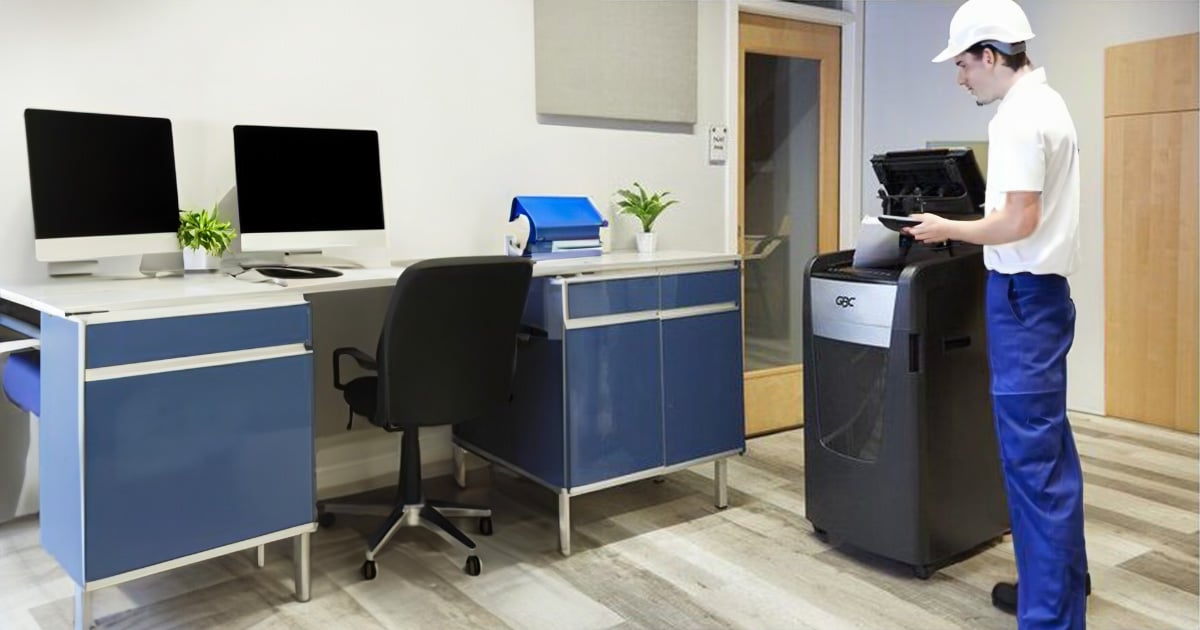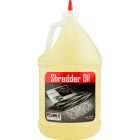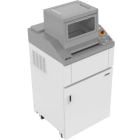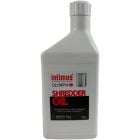Are You Taking Care of Your Shredder? Important Maintenance Tips

Estimated Reading Time
- 3 Minutes
TLDR
Regular maintenance is key to ensuring your paper shredder’s longevity and efficiency. But how do you do it properly? This article will guide you through essential tips and tricks to keep your shredder running smoothly and efficiently for years to come.
If you’ve invested in a paper shredder, you want to make sure it’s always performing at its best. Just like any other machine, your shredder benefits from regular care and attention to prevent damage and optimize lifespan and performance. No matter the type or brand, you should regularly lubricate the blades, clean your shredder, avoid overloading, and let it cool down in between sessions. In this guide, we’ll cover how to clean a cross cut shredder and other types of shredders. Let’s take a closer look at some specific maintenance tips to keep your shredder running efficiently for years to come.
Why Lubricating Your Shredder Machine Matters
Lubrication isn’t just for cars and bikes— your shredder needs it too! Let’s see why and how you can do it properly.
Why Lubricate?
Lubrication contributes to the longevity and durability of your shredder by helping it:
- Avoid excess heat generation
- Ensure quieter, smoother operation
- Prevent strain on the motor and cutting cylinders
Methods of Lubrication
Lubricating your shredder isn’t a one-size-fits-all approach. Three methods cater to different needs:
- Direct oiling: Applying oil directly to the blades and running the machine.
- Using lubricated paper: Adding oil to a sheet of paper and running it through the blades; also known as indirect oiling.
- Using wax paper: Using wax paper to lubricate a shredder oils the blades and helps clean them as it passes through.
Tips and Precautions
When lubricating your shredder, you want to be sure you’re doing it right for the best results. But how often should you oil a paper shredder? In general, it’s best to lubricate your shredding head after one hour of continuous shredding or whenever you empty the waste bin. Micro-cut and high-security shredders may need to be oiled more frequently, while strip-cut shredders may not need to be oiled quite as often.
Now, onto the signs you need to lubricate. Your shredder may need a little oil if it starts:
- Making unusual noises
- Running slower than usual
- Not shredding as finely as it used to
- Struggling to handle the same capacity that it always has
Lastly, there are some oils you shouldn’t use for your paper shredder. Avoid regular household vegetable oils or WD-40, since their high saturated fat content can gum up the shredders. Alternatively, oils like baby oil or machine oil are typically too thin and don’t have the heat tolerance to handle the high friction shredders create. Instead, use a shredder oil that is designed specifically for these blades and machines.
A Clean Shredder is a Happy Shredder
Just as you wouldn’t let yourself go months without a wash, you should also clean your shredder regularly. After all, a clean shredder functions better and lasts longer. Let’s look at how to clean paper shredder blades.
Frequency of Cleaning
How frequently you should clean your shredder depends on your environment. In business environments where the shredder is in constant use, it’s wise to give it a thorough cleaning at least once a month or so. For personal use, where you might only use a shredder occasionally, you can clean it every few months or even once a year.
Steps to Clean
Now we’ll cover how to dissolve paper stuck in the shredder. Cleaning your shredder’s blades involves a few simple steps:
- Turn off and unplug the shredder before you start.
- Open the machine cover and carefully remove any large pieces of paper or debris.
- Use a soft brush to gently dust off the blades as best you can or use a can of compressed air.
Additional Tips
When cleaning your shredder, avoid blowing into the cutting shaft or using a wet cloth or cleaning solutions. The moisture and saliva particles can damage the blades and metal components irreparably.
You can also place a small purifier near your shredder to manage the amount of paper dust that goes airborne, providing a cleaner environment.
Don't Overload the Shredder
It’s tempting to feed as much as you can into the shredder to get the job done quickly. However, overloading your shredder can lead to the dreaded jams, decreased efficiency, and even irreparable damage. Consider how to gauge your shredder’s capacity and what you can safely feed into it.
Understanding Shredding Capacity
The “maximum capacity” of a shredder is a peak performance indicator rather than a daily standard. It indicates the maximum capacity it can handle at any one time, and is most often based on thin copy paper.
Imagine you drove your car at its top speed constantly; it is bound to wear out the motor, tires, and other components much more quickly than if you drove it less aggressively. Continuously running your shredder at full capacity can strain the motor, leading to overheating and a reduced lifespan. Therefore, it’s always best to operate slightly below the maximum for the best operation and longevity.
Shredding Material Guidelines
Depending on your machine, some materials that are often safe to shred include:
- Paper
- Credit cards
- CDs/DVDs
- Staples
- Small paper clips
However, each model comes with its own set of guidelines and manufacturer’s recommendations. It’s best to follow them to keep your machine efficient and
long-lasting. Never shred anything your shredder isn’t designed for to avoid damage. And be careful with adhesive, such as that found on envelopes, as it can gum up the blades and cause jams later on.
Why it’s Important to Let your Shredder Cool Down
Shredders need a break in between sessions to avoid overheating and a shortened lifespan. Overheating can cause wear and tear on the motor, and even result in permanent damage. It’s essential to give your shredder some downtime so it keeps operating efficiently.
Determining the right cool-down period for your shredder often depends on how long your shredding session was and its make and model. Larger heavy-duty machines may need a shorter cooldown period, while smaller personal shredded machines may need more cool-off time. Always refer to your shredder’s manual for specific cool-down recommendations.
Benefits of Unplugging Your Shredder
Unplugging your shredder when not in use brings several benefits. First, it’s a great safety measure, especially if you have curious pets or kids around. Second, shredders may continue to draw power when plugged, even if they’re idle. Continuous power can cause gradual wear even if the machine isn’t actively shredding.
By unplugging your shredder, you cut down on electricity consumption and reduce wear on the motor, effectively turning it into an eco-friendly shredder. So it’s good for your wallet and the environment.
Maintaining Your Paper Shredder
Whether you’re a government agency using a paper shredder every day or a home office worker who uses it occasionally, it’s clear that regular maintenance keeps your shredder efficient, durable, long-lasting, and ready to tackle any appropriate shredding tasks you throw its way. So make these tips a part of your shredder’s regular care routine to enjoy a machine that stands the test of time.
Want to know more about taking care of your shredder?
Give us a call at 1-800-944-4573, we’d be happy to assist you.









